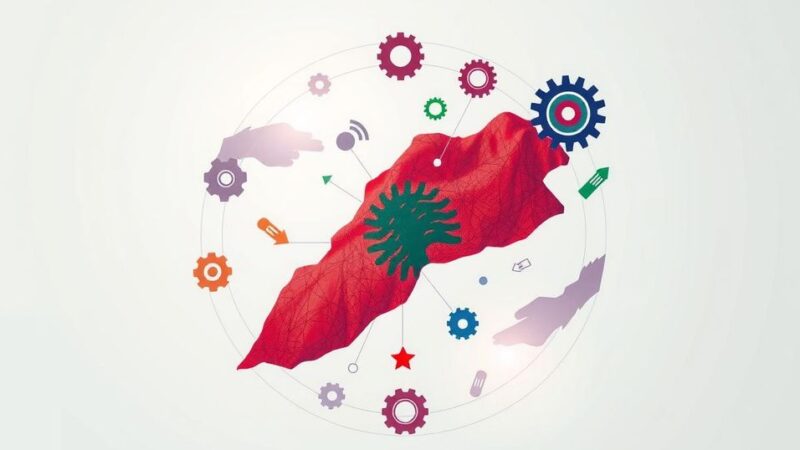Syria’s interim president Ahmad al-Sharaa visited Saudi Arabia, indicating a shift away from Iranian influence. Accompanied by the foreign minister, this trip symbolizes a re-establishment of ties with Arab nations. The interim government faces ongoing threats from extremist groups as it navigates post-war reconstruction and sanctions relief.
The interim president of Syria, Ahmad al-Sharaa, made his inaugural trip abroad to Saudi Arabia, suggesting a potential shift from Iran as Syria’s main ally. Accompanied by Foreign Minister Asaad al-Shaibani, their arrival was highlighted by state-run media, with imagery of their travel indicating support from the Saudi government.
Once associated with al-Qaida, al-Sharaa now leads Hayat Tahrir al-Sham, which has distanced itself from its extremist past. This strategic visit to Riyadh underscores an effort to realign Syria’s international alliances and engage with Arab nations that once funded opposition against the Assad regime, notably after the civil strife that erupted in 2011.
This visit marks a significant geopolitical moment as Saudi Arabia, which had previously backed rebel groups opposing Bashar Assad, is now engaging with a new Syrian leadership. Al-Sharaa’s administration is careful not to overly align with Iran and Russia, focusing instead on reformulating Syria’s image to attract international investment and support for post-war reconstruction efforts.
With the damage from over a decade of conflict posing immense rebuilding needs, lifting international sanctions is crucial for Syria’s recovery. Saudi Foreign Minister Prince Faisal bin Farhan’s earlier visit to Damascus reflects ongoing diplomatic efforts aimed at authorizing essential economic assistance, which could stabilize the region further.
Despite these diplomatic advancements, Syria continues to grapple with threats posed by extremist groups such as the Islamic State. Recently, a car bomb incident in Manbij illustrates the persistent security challenges that the interim government must navigate as it seeks to establish control and rebuild its society.
The context of this diplomatic engagement involves Syria’s longstanding civil conflict, which began in 2011. This has led to varying alliances, primarily with Iran and Russia, against a backdrop of regional tensions and the involvement from several foreign powers. Ahmad al-Sharaa, appointed as interim president of Syria, represents a faction that formerly allied with al-Qaida, signaling a potential reevaluation of Syria’s current strategic partnerships and future direction amid international scrutiny and economic hardships.
Ahmad al-Sharaa’s diplomatic journey to Saudi Arabia signifies a potential turning point for Syria as it seeks to distance itself from Iranian influence, aiming instead for closer ties with Arab nations. The need for economic support and the lifting of sanctions will be critical in facilitating Syria’s reconstruction efforts. Meanwhile, the interim government continues to face significant security challenges amidst ongoing threats from extremist factions.
Original Source: apnews.com






